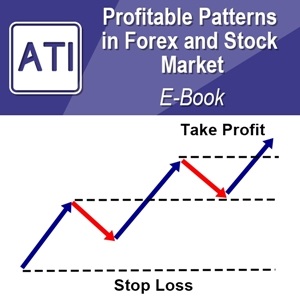Below is the Text Summary From the Full PDF Article:
Best Fibonacci Ratio and Shape Ratio for Winning Technical Analysis with 100 Years of Belief
The Fibonacci Ratio is used by millions of forex and stock market traders every day. It is a mega popular tool in the trading world. If you do not know what the Fibonacci ratio is, here is the simple explanation. Fibonacci ratio is the ratio between two adjacent Fibonacci numbers. To have a feel about the Fibonacci ratios, here is the 21 Fibonacci numbers derived from the relationship: Fn = Fn-1 + Fn-2.
0, 1, 1, 2, 3, 5, 8, 13, 21, 34, 55, 89,144, 233, 377, 610, 987, 1597, 2584, 4181, 6765, …………………
Once the Fibonacci numbers are reasonably large, you can just pick up any two adjacent Fibonacci numbers above to derive the ratio. For example, we will find that 4181/6765 = 0.618 and 1597/2584 = 0.618. Here 0.618 is called as the golden ratio. The golden ratio is one of the most important Fibonacci ratios. The rest of Fibonacci ratios are derived by using simple mathematical relationship like inverse or square root or etc. Table below shows the list of Fibonacci ratios you can derive from the Golden ratio 0.618.
Type Ratio Calculation
Primary 0.618 Fn-1/Fn of Fibonacci numbers
Primary 1.618 Fn/Fn-1 of Fibonacci numbers
Primary 0.786 0.786=√0.618
Primary 1.272 1.272=√1.618
Secondary 0.382 0.382=0.618*0.618
Secondary 2.618 2.618=1.618*1.618
Secondary 4.236 4.236=1.618*1.618*1.618
Secondary 6.854 6.854=1.618*1.618*1.618*1.618
Secondary 11.089 11.089=1.618*1.618*1.618*1.618*1.618
Secondary 0.500 0.500=1.000/2.000
Secondary 1.000 Unity
Secondary 2.000 Fibonacci Prime Number
Secondary 3.000 Fibonacci Prime Number
Secondary 5.000 Fibonacci Prime Number
Secondary 13.000 Fibonacci Prime Number
Secondary 1.414 1.414=√2.000
Secondary 1.732 1.732=√3.000
Secondary 2.236 2.236=√5.000
Secondary 3.610 3.610=√13.000
Secondary 3.142 3.142 = Pi = circumference /diameter of the circle
Figure 1: Fibonacci ratios and corresponding calculations to derive each ratio.
Then how do we use the Fibonacci ratio for our trading? Well, the common approach is to take the two price movements at each swing point and then just divide the latest price move Y2 by the previous price move Y1 (The ratio = Y2/Y1) as shown in Figure 2. As shown in Figure 3 and Figure 4, many swing traders uses this Fibonacci retracement to pick up the potential reversal point for their trading. You can also use it for breakout trading too (i.e. Fibonacci expansion). Up to this point, I guess everyone is happy. Now the real question is “Why do the Fibonacci ratios work or not work for our trading?”. Does anyone have an answer to this question? You will find that the Fibonacci ratios are without doubt the popular topics in many major trading websites including www.investopedia.com or www.stockcharts.com. Even after reading dozens of articles about Fibonacci ratio, it is not easy to spot any rational behind the method. The best I can find is the reference to the Elliott Wave developed by Ralph Nelson Elliott in 1938. Then it became popular among trader. Being popular might be good rational. However, can we actually prove it scientifically? Have you asked these two questions:
Question 1: Are all the Fibonacci ratios equally effective for our trading?
Question 2: Can we use some other ratios rather than the Fibonacci ratios for our trading?
Whether you have asked these two questions or not, we will try to answer to these two question in this article because it would be helpful for our trading.




